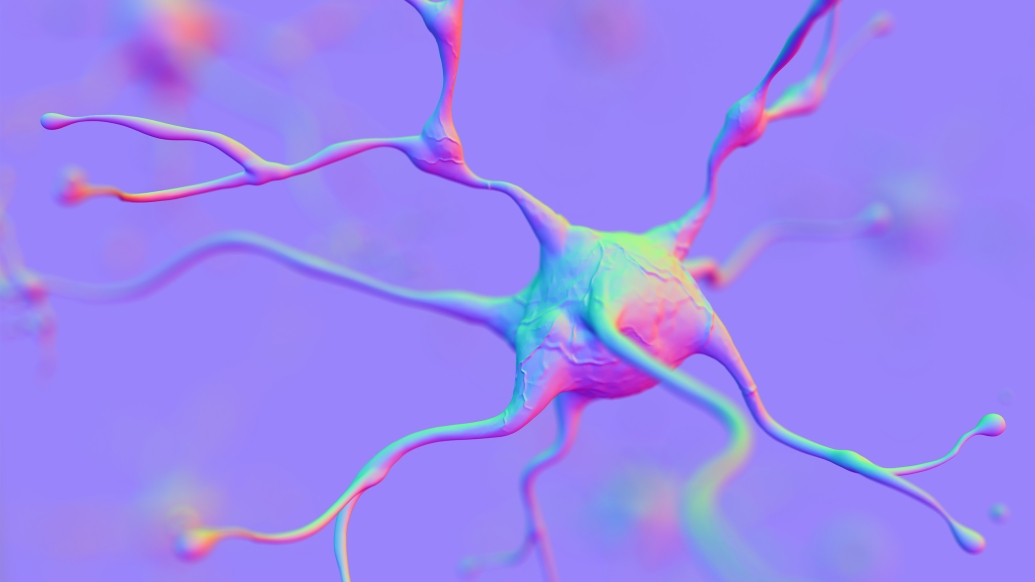Discovery potentially reveals mechanism behind brain changes in people with autism
2:24 PM
Author |

Autism spectrum disorder emerges in early childhood, presenting with a broad range of signs and symptoms involving a child’s ability to communicate, learn and behave.
Scientists studying autism agree that the condition likely has multiple causes, both environmental and genetic. A new U-M study links two autism-associated genes together for the first time, potentially revealing a mechanism behind brain changes seen in people with autism.
“There are hundreds of genes implicated in the risk of autism. What we’re missing are convergent pathways that explain why these hundreds of genes contribute to these disorders,” said Paul Jenkins, Ph.D., assistant professor of pharmacology and psychiatry at U-M Medical School.
De Novo mutations
The study focuses on two genes in particular, Snc2a and Ank2, that often show de novo mutations in children with autism. De novo mutations are mutations that occur spontaneously and are not inherited.
Snc2a encodes a voltage-gated sodium channel, Nav1.2, found in neurons in the brain. In normal function, these channels allow neurons to fire and send signals to each other.
Jenkins, whose lab studies the biological underpinnings of developmental and psychiatric disorders, approached his eventual collaborators, Andrew Nelson, Ph.D., formerly at U-M and now at University of California, San Franscico (UCSF), and Kevin Bender, Ph.D., who leads a lab at UCSF.
“We are interested in how these proteins are made, trafficked, and held where they are supposed to be, how they contribute to normal neuronal function, and then, ultimately, how that process goes wrong in disease,” said Jenkins.
Ankyrin-B protein
Their work pointed to another gene often associated with autism, Ank2, that encodes for a protein called ankyrin-B.
“You can think of ankyrins sort of as parking spots for these sodium channels,” explained Jenkins. “They grab the channel and hold it in place and if the ankyrin is not there, the channel doesn’t know where to go.”
The team realized that losing the sodium channel and losing the ankyrin that holds the sodium channel in place may ultimately have the same effect. Using mouse models, they knocked out each gene to see how their loss affected brain cell function.
The first surprise was finding that ankyrin-B held the sodium channel Nav1.2 in place within a neuron’s dendrites, the branched extensions of a neuron along which inputs are received from other brain cells. Those signals are then transmitted via another branch called an axon to other brain cells via an electrical impulse called an action potential.
“But the other thing that happens is that the action potential also goes backwards up into the dendrites and plays an important role in signaling back to the dendrites that that input we just received was a good one and we should keep that synaptic connection around,” explained Jenkins. Importantly, one of the hallmarks of autism is changes in synaptic structure and density.
New understanding
Their study showed that without ankyrin-B, dendrites had a reduced ability to fire and there was a reduction in synapses between brain cells, due to reduced numbers of the Nav1.2 sodium channels. Just how ankyrin-B and Nav1.2 sodium channels are localized in dendrites during early development are the focus of future research.
This new understanding could point toward therapies designed to increase the number of ankyrins to help ease some of the more severe symptoms of autism, said Jenkins. “Our ultimate goal is to improve quality of life, whatever that might mean for patients.”
Additional authors include Andrew D. Nelson, Amanda M. Catalfio, Julie P. Gupta, Lia Min, René N. Caballero-Florán, Kendall P. Dean, Carina C. Elvira, Kimberly D. Derderian, Henry Kyoung, Atehsa Sahagun, and Stephan J. Sanders.
Paper cited: “Physical and functional convergence of the autism risk genes Scn2a and Ank2 in neocortical pyramidal cell dendrites,” Neuron, 2024. DOI: https://doi.org/10.1016/j.neuron.2024.01.003
Live your healthiest life: Get tips from top experts weekly. Subscribe to the Michigan Health blog newsletter
Headlines from the frontlines: The power of scientific discovery harnessed and delivered to your inbox every week. Subscribe to the Michigan Health Lab blog newsletter
Like Podcasts? Add the Michigan Medicine News Break on Spotify, Apple Podcasts or anywhere you listen to podcasts.

Explore a variety of health care news & stories by visiting the Health Lab home page for more articles.

Department of Communication at Michigan Medicine
Want top health & research news weekly? Sign up for Health Lab’s newsletters today!





